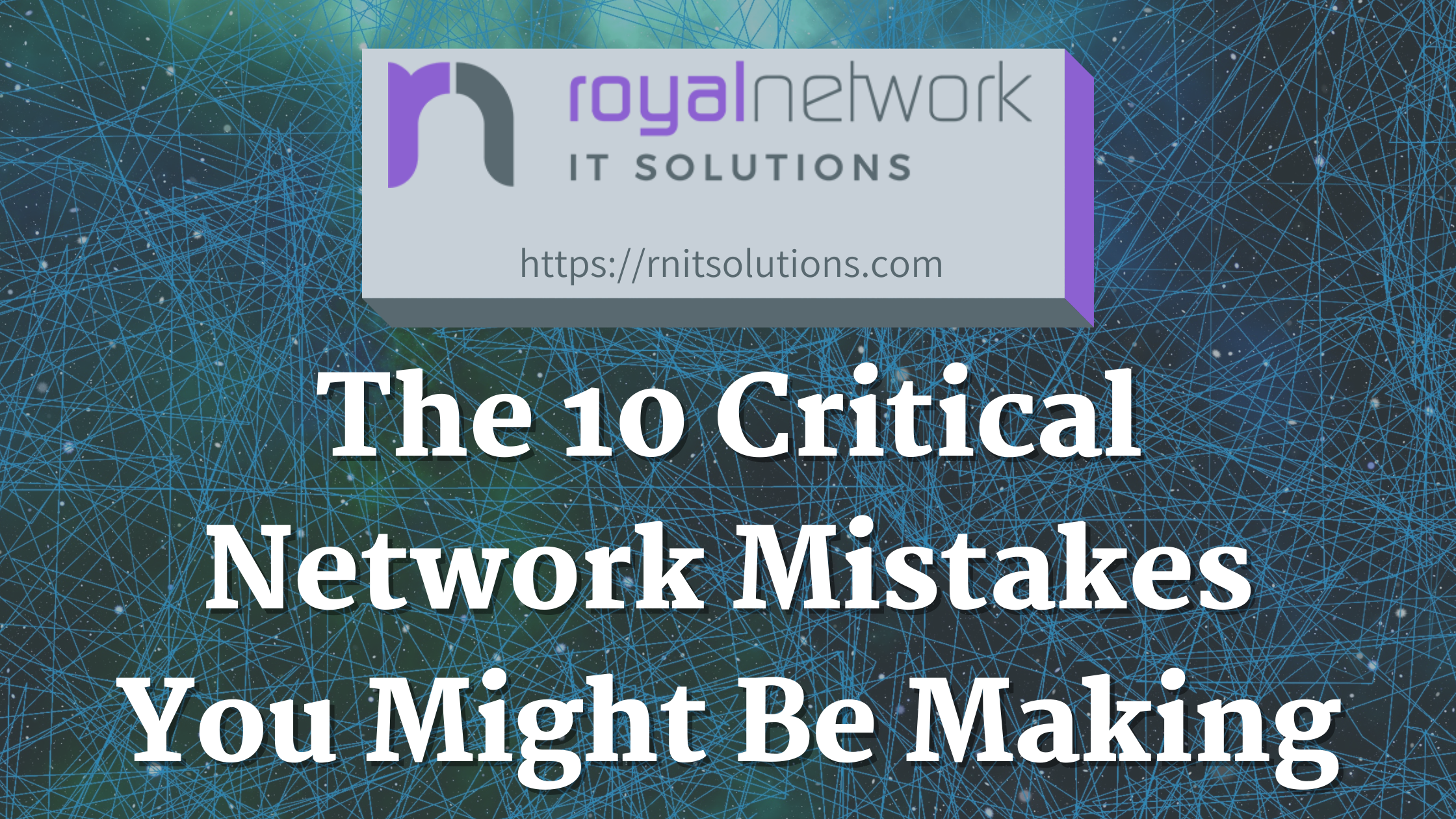It’s nearly impossible to overstate just how important your network is for your business. Your hardware, software, Wi-Fi, communications, data storage, backup plan. All of it depends on the quality and ability of your network to operate well.
We put together a list of the 10 critical mistakes you might be making when it comes to setting up and operating your business’ network.
1. Security as an add-on feature
Security should not be an add-on to your network design but built into every decision you make. Software updates and policies about upkeep, storage backup plans and policies, an encrypted Wi-Fi network, password expiration and policies… All of these are important to protecting your business network and data. Firewalls, antivirus software, etc. are important, but are just part of a big picture that makes up your business’ security plan.
2. Choosing one-size-fits-all coverage
In the age of remote work, network design can no longer be set up simply to handle an office with a set number of workstations. Different devices, a variety of data, areas of high traffic or density, internal business operations or consumers engaging with the business are some of the diverse areas needing IT coverage. Modern network design must keep all these in mind to work efficiently.
3. No scalability
When setting up a network, you should consider future needs and business growth. Businesses inevitably have different needs, including scaling up for growth, but also scaling back in some areas at times. Whether it’s increasing the bandwidth capacity or adding devices, which are typical ways you might increase your network’s ability, having a scalable network will make these additions easier and less costly.
4. Wasting time & money
When you make any kind of investment for your business’ network, whether that’s new hardware, software packages, or managed IT services, ensure that your money is being spent wisely. If you are paying for a software package that offers features you’re not using, it’s a waste. If a managed IT service provider offers data and insights, and you don’t have anyone or any way to use that information to implement changes, it’s a waste.
5. Using old hardware
It might be tempting to use the hardware you have on hand when upgrading. However, you might think twice about keeping older computers or network infrastructure when you’re either setting up or expanding your business’ network.
Slow or incompatible hardware not only slows your operations, making the expensive software or other technology you are paying for inefficient or useless, but it can also be a security concern. Consider how each network investment will work cohesively with all other hardware and software on the network. Rather than simply buying a new router here or there, or replacing a few older computers, you’ll expand with a broader vision.
6. Quality not quantity
In a similar vein, every IT investment should be calculated and practical. Buying cabling, routers, switches, and more that are inexpensive or incompatible with your other hardware and software just turns into wasted money.
7. No monitoring & management
If you have managed IT services or an internal tech team who consistently monitors and evaluates your network, it’s possible to prevent problems before they happen. This is huge when it comes to keeping your business online and avoiding costly network downtime. Additionally, with eyes on your network, you can make proactive decisions and changes based on up-to-date analysis of your network’s capabilities.
8. No backup or disaster recovery plan
Backing up company data and making sure it’s protected in case of a breach or other disaster is one of the fundamentals in maintaining a business’ network today. Instead of warehouses full of physical inventory, most businesses’ main asset is their data. Your network needs to be designed to protect and backup company data with a strong backup and disaster recovery plan.
9. Failing to implement password and other IT policies
As employees use more devices such as laptops and mobile devices, and use them outside of the office, there are added security concerns. Creating policies for employees on how they are to create and use passwords, and all other policies for using their devices, will save you headaches.
10. Lack of support
Downtime costs money. Paying for consistent support in the form of a monthly service plan can save your business money in the long run, as problems are taken care of quickly and efficiently. A managed IT service can be tech support for immediate needs but can also be aware of the specific ins and outs of your unique network design, often monitoring potential issues before they arise.
Call us
Looking to set up, expand, or enhance your company’s network design? Our team at Royal Network IT Solutions, Inc. can guide you along the process to make sure you’re making good decisions tailored to your unique business needs. Our professionals have over 50 years of experience providing technical support to the Tustin and Eastvale areas of California.
Call or email us today for a consultation at (949) 236-7700 or services@rnitsolutions.com.

